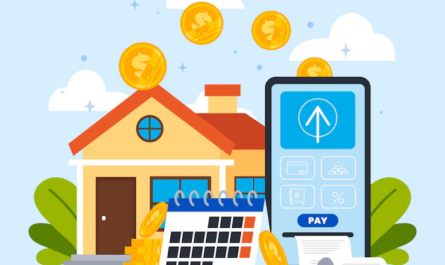In today’s dynamic financial landscape, all of us are constantly seeking ways to manage our finances effectively. Amidst the array of financial tools available, personal loan refinancing has gained significant popularity. This article aims to demystify this concept and shed light on whether it could be a strategic move for everyone or not.
The Definition
Personal loan refinancing, in layman terms, is a financial strategy where you take out a new loan to pay off one or more existing loans. While it may initially sound counterintuitive and confusing, there are several potential benefits to this approach. These advantages can range from lower refinance rates and reduced monthly payments to the convenience of having to manage a single loan instead of juggling several debts.
Decoding the Refinancing Process
Refinancing works by replacing our current loan with a new one that has more favourable terms. The new loan is used to pay off the old one, leaving us with just one loan to manage. The refinance rates one can secure generally depend on the credit score, income, and other financial factors.
To get started with refinancing, it’s important that we first understand our current loan’s terms and conditions. We need to be clear about what we are currently paying in terms of interest, fees, and monthly instalments. This understanding provides a benchmark against which one can compare potential refinancing options.
Once we have a good understanding of our finances and our loan structure, it’s time to research various lenders and their loan offerings. It’s crucial to compare the interest rates, terms, fees, and other conditions offered by different lenders to find the most favourable deal. Once we have identified a lender that fits our financial needs, the application process typically involves submitting all the financial documents and undergoing a credit check.
Also Read: Top 7 Benefits of Personal Loan You Must Know

All you need to know about the Airtel Personal Loan
In the realm of digital financial products, the Airtel Personal Loan stands out as a beneficial tool. This completely digital product offers low interest rates, and easy documentation. Moreover, the application and management process is entirely digital, offering unmatched convenience.
How to Apply for an Airtel Personal Loan
Applying for an Airtel Personal Loan is a straightforward and hassle-free process. Firstly, we need to download the Airtel Thanks App and log in using our mobile number. From there, we must proceed to financial services section and enter your personal information like your PAN card, employment details, bank statements, etc. At this stage, we will have to fill in the application form and complete the Know Your Customer (KYC) process. This involves submitting the required documents for personal loan, which include, residential proof, identity proof, and a passport-size photograph. Once the verification is complete, your loan amount will be sanctioned within 24 hours.
Personal loan refinancing can be a powerful tool for managing our finances. It can potentially reduce our financial burden by offering better loan terms, while Airtel’s Personal Loan provides convenience and ease. However, as with all financial decisions, it’s crucial to thoroughly evaluate our situation and seek professional advice, if needed.
Steps on Refinancing
Refinancing our loan may seem like a scary and befuddling process, but breaking it down into steps can make it more manageable. Here are the key steps involved:
Assess Your Current Loan: The first step in refinancing is to correctly understand the terms of our current loan. This includes being updated with the current interest rates, monthly payments, and remaining loan balance.
Determine Our Goal: We need to ask ourselves certain questions to determine our financial goals. Questions like: Do we want to lower the monthly payment, reduce the interest rate, or pay off our loan sooner? Having a clear goal will guide your refinancing process.
Check Your Credit Score: Our credit score plays a crucial role in the refinancing process. A higher credit score may help us secure better refinance rates.
Compare Lenders: We need to research various lenders to find the best refinance rates and terms. We also need to focus on other aspects of this loan like the interest rates, fees, and terms each lender offers.
Apply for Refinancing: Once we have chosen a lender, apply for refinancing. This will likely involve providing financial information and documents for review.
Close on our new loan: If approved, the next step is to close on the new loan. This involves paying off your old loan with the funds from the new one. Once this step is completed, you’ll start making payments on your new loan.
Also Read: Personal Loans for Self-Employed in India
Refinancing can offer several benefits, including:
Lower Interest Rates: One of the main reasons people refinance is to secure a lower interest rate on their loans. This can save us a significant amount of money over the life of the loan.
Lower Monthly Payments: Refinancing can also result in lower monthly payments, making it easier to manage your budget.
Shorten Loan Term: If we are able to make higher monthly payments, we can refinance to a shorter loan term. This allows us to pay off the loan faster and pay less in interest.
Switch Loan Type: Refinancing can enable us to switch from an adjustable-rate loan to a fixed-rate loan, providing more predictability in our payments.
Consolidate Debt: If one has multiple loans or credit card debts, one can consolidate them into a single loan through refinancing. This makes the debts easier to manage and can potentially lower the overall interest rate.
Also Read: What are the Various Types of Personal Loans
Remember, understanding these financial tools and making informed decisions can help us gain control over our finances and work towards a more secure financial future.



